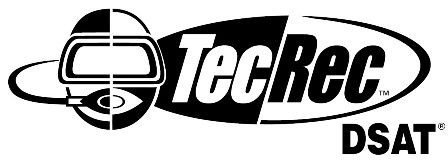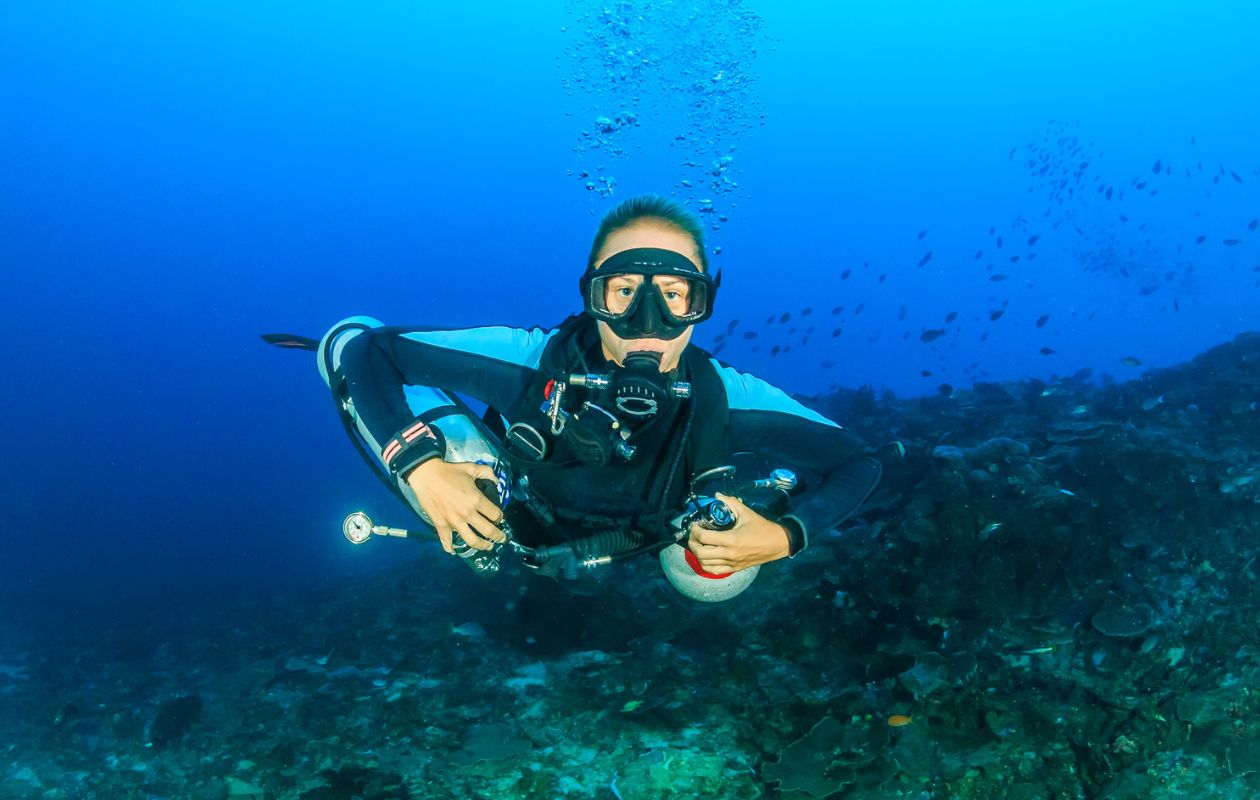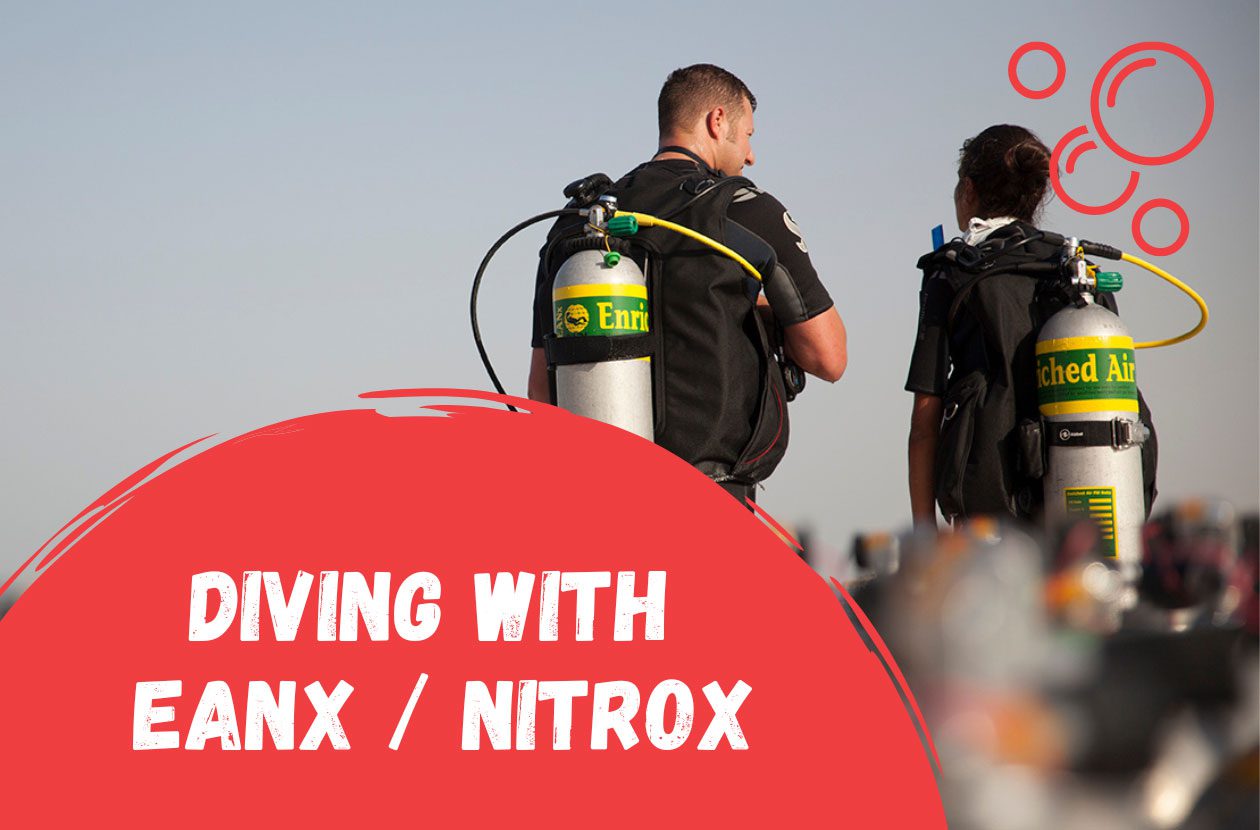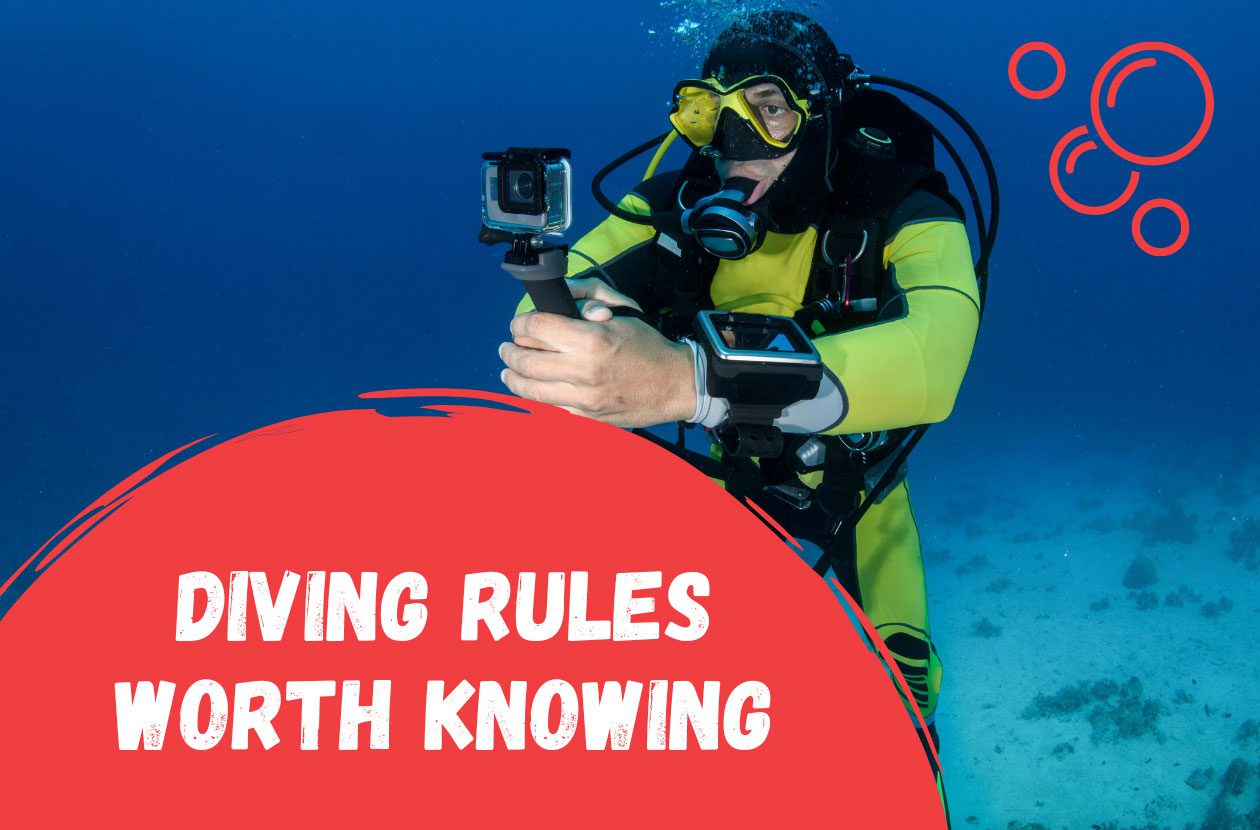Technical diving is a type of scuba diving that goes beyond the limits of recreational diving. It involves the use of specialized equipment, training, and experience to dive in environments that are more challenging and often more hazardous than those typically encountered by recreational divers.
If you are wondering how to get started with technical diving, this article will help you understand the basic aspects of this type of diving. This will not be a sophisticated tutorial full of jargon, but a general look at the subject. Let’s get started!
Table of Contents
What is a technical diving?
Technical divers often dive in conditions that require them to carry multiple tanks of different gases, including oxygen and nitrox, to manage their breathing gases and decompression obligations. They also use specialized diving equipment, such as sidemount or backmount scuba rigs, drysuits, and decompression computers, to manage their dive profiles and navigate the underwater environment safely.
The skills and knowledge required for technical diving are more advanced than those needed for recreational diving. Technical divers must have a thorough understanding of decompression theory, gas management, and emergency procedures. They must also be proficient in using specialized diving equipment and techniques, such as staged decompression and gas switching, to safely manage their dives.
What’s the history of technical diving?
The origins of technical diving can be traced back to the early days of scuba diving, when military and scientific divers first began pushing the limits of what was possible with the technology available at the time. As the sport of scuba diving grew in popularity, so too did the desire of some divers to explore deeper and more challenging environments.


One of the pioneers of modern technical diving was a U.S. Navy officer named Hank Brown. In the early 1960s, Brown began experimenting with different breathing gases and dive profiles to extend the limits of diving. He and his team developed many of the techniques and equipment that are now commonly used by technical divers, including the use of nitrox and the dive computer.
Today’s tec divers
Today, technical diving is a thriving community of divers who are passionate about exploring the underwater world and pushing the boundaries of what is possible. Technical diving is not for everyone, and it requires a significant commitment of time, money, and effort to become a competent technical diver. However, for those who are willing to put in the work, the rewards of technical diving can be incredible.
Technical divers have the opportunity to see and experience things that most people never will. They can explore sunken shipwrecks, submerged caves, and other underwater environments that are off limits to recreational divers. They can also participate in scientific research and conservation efforts, and contribute to our understanding of the underwater world.
Why is it worth becoming a technical diver?
Despite the challenges and risks associated with technical diving, many divers find it to be an incredibly rewarding and fulfilling activity. The sense of accomplishment and personal growth that comes from mastering the skills and knowledge required for technical diving is unmatched by any other activity. Technical diving also allows divers to form close bonds with their fellow divers and to share in the excitement and adventure of exploring the underwater world together.
If you are interested in pursuing technical diving, the first step is to find a reputable technical diving training agency and enroll in a technical diving course. These courses are typically multi-level, with each level building upon the skills and knowledge learned in the previous level. It is important to choose a training agency and instructor that has a proven track record of safety and excellence, and to take your time and progress at a pace that is comfortable for you.
Is tec diving for everyone?
Let’s get this straight from the beginning. Technical diving is not for everyone. Just like hiking in the mountains can be done by anyone, but climbing Mt Everest requires different resources and aptitude. So why become a technical diver? These skills will allow you to stay underwater longer and enjoy a better experience. Want to see a wreck that lies 35 meters underwater?


Technical diving is not something that can be learned overnight, and it takes time and dedication to become a competent technical diver. However, with the right training, equipment, and attitude, anyone who is willing to put in the effort can learn the skills and knowledge needed to become a successful technical diver.
What does the technical diving training look like?
There is no doubt that this type of diving carries some increased risks. While recreational diving is very safe, many aspects come into play in technical diving. That’s why good training is key here, and you shouldn’t even think about embarking on an underwater adventure without a good diving course.
There are many organizations that offer training for technical divers. I will use the PADI program as an example, because it is what I know and use on a daily basis.
The first stage of technical diving – PADI TEC 40
The TEC 40 course is the first step into technical diving. In this course you will learn the basics and principles of this new type of diving. The program for all PADI TEC courses has been prepared by DSAT – Diving Science And Technology.


This is one of the world’s largest research and development companies, offering the world’s latest technical diver training system, created on the basis of years of experience in the field.
What you will learn on the PADI TEC 40 course:
- how to plan a technical dive
- how to use computer decompression planning software
- how to use a gas cylinder for decompression – oxygen content up to 50%
- how to think like a technical diver
What are the requirements for the PADI TEC 40 course?
In order to start the technical diving course, you must have previously completed some basic courses:
- PADI Advanced Open Water Diver certification or equivalent,
- PADI Enriched Air Diver certificate or its equivalent,
- PADI Deep Diver certification or proof of at least 10 dives to 30 meters/100 feet
- Medical form signed by a physician within the last 12 months.
- a minimum of 30 dives performed
- at least 18 years of age.
If you are not sure if you qualify for a technical diving course, be sure to contact your instructor. He will certainly dispel all your doubts.
What qualifications will you gain after the PADI TEC 40 course?
- diving to a depth of 40m with decompression of no more than 10 minutes
- using a stage tank with a gas of up to 50% oxygen
Completing the course, however, is only the beginning of the technical diver’s journey but you still have a long way to go. That’s what’s most beautiful about it. Maybe you are an experienced recreational diver and have already made many dives.
Maybe you thought that nothing will surprise you anymore and that you have nothing more to discover. But this is not true! Technical diving is a way to discover many places you didn’t have access to before.
What equipment is used for technical diving?
The equipment configuration of technical divers differs significantly from recreational diving standards. There are new elements and additional equipment. You will learn everything during a technical diving course. In short, tec diving requires more tanks. Two main scuba tanks and an additional decompression tank.


Many technical divers use a “backmount” set, where the two connected tanks are kept on the back and the extra tank is strapped to the side – known as a stage.
However, this is not the only option and the “sidemount” set is becoming increasingly popular. In this option, all tanks are placed on the sides and evenly distributed on the left and right sides. This system originated in cave diving, but is now used even in recreational diving.
I am already a technical diver. What’s next?
The PADI TEC 40 course is just the beginning. In order to become a well-trained tec diver, you should pass the next grades, PADI TEC 45, PADI TEC 50. After completing the “50” course, you will be able to take a technical diving course that uses a gas called “trimix” for breathing. These courses are PADI TEC TRIMIX 65 and PADI TEC TRIMIX DIVER. After completing the latter course, you will be able to dive below 90m! That’s already impressive, isn’t it?
But the most important thing after completing any course is to gain experience. During the course you learned what and how, now it’s time to start using all your new knowledge. Don’t rush into more courses, and just take your time to gain experience. Do at least a few or a dozen dives before taking the next step. This will work best for you. Remember that diving is not a race.
If you don’t have a technical diving partner, your best bet is to ask at your dive center if they organize tours for technical divers. Surely your instructor will be happy to help you educate and gain experience.
Technical diving course – let’s recap
Technical diving is not for everyone and is not at all necessarily the path you will take. There is no denying that this type of diving is more demanding and tiring. More tanks to take and equipment to handle. Is it something that will interest you? You never know, and it’s worth trying, if only to know that it’s not what makes you happy.
However, if you already know that by doing a basic diving course you want to go technical then great. Learn more than you need to and soak up the knowledge as much as you can. Ask questions and look for answers from the first moment. This will help you better understand the essence of diving and become a good technical diver.









